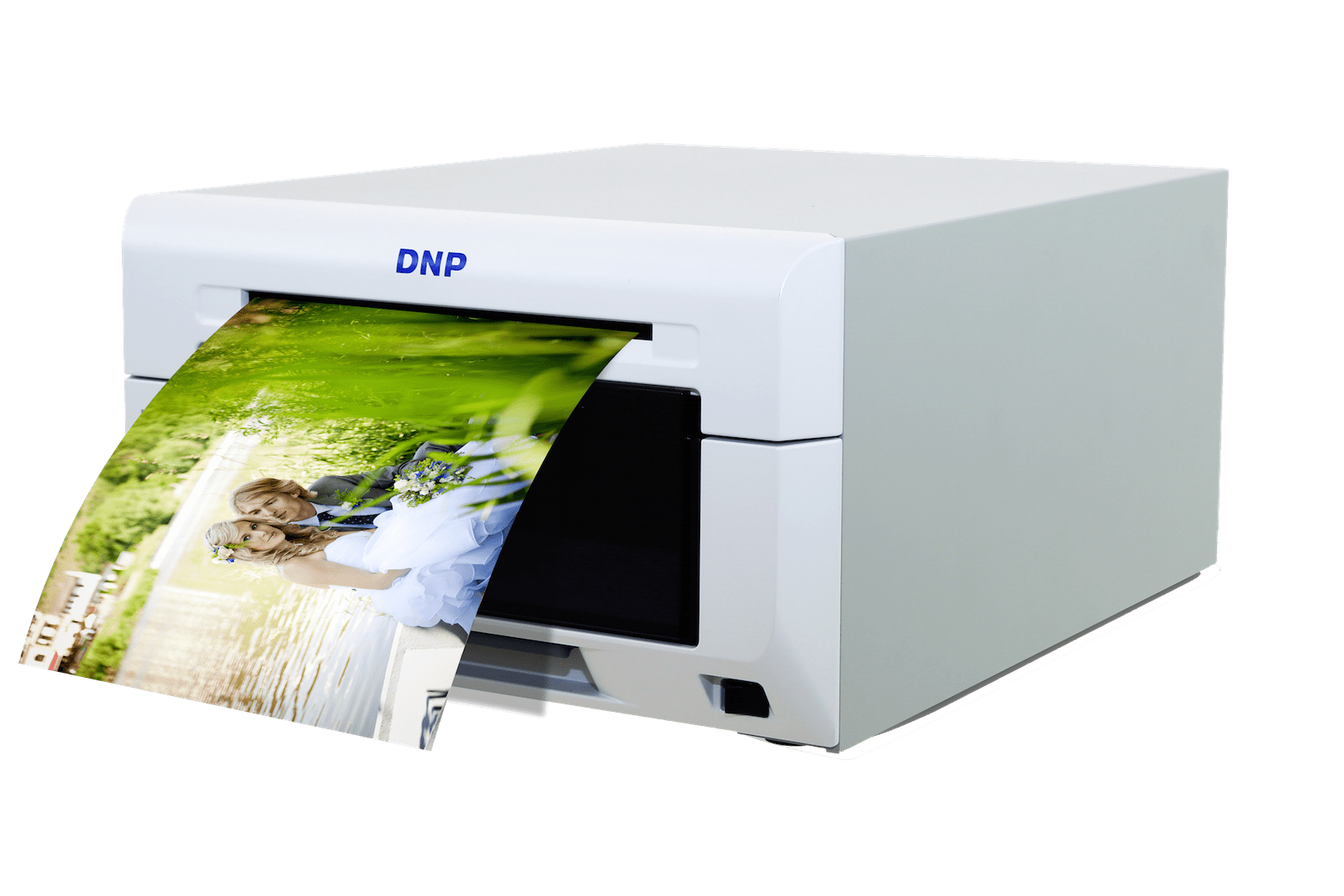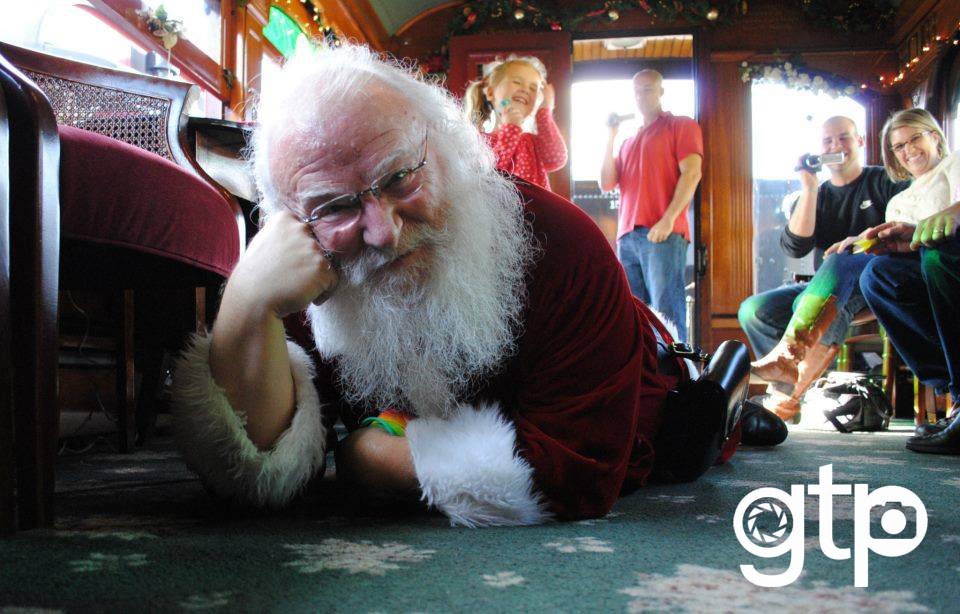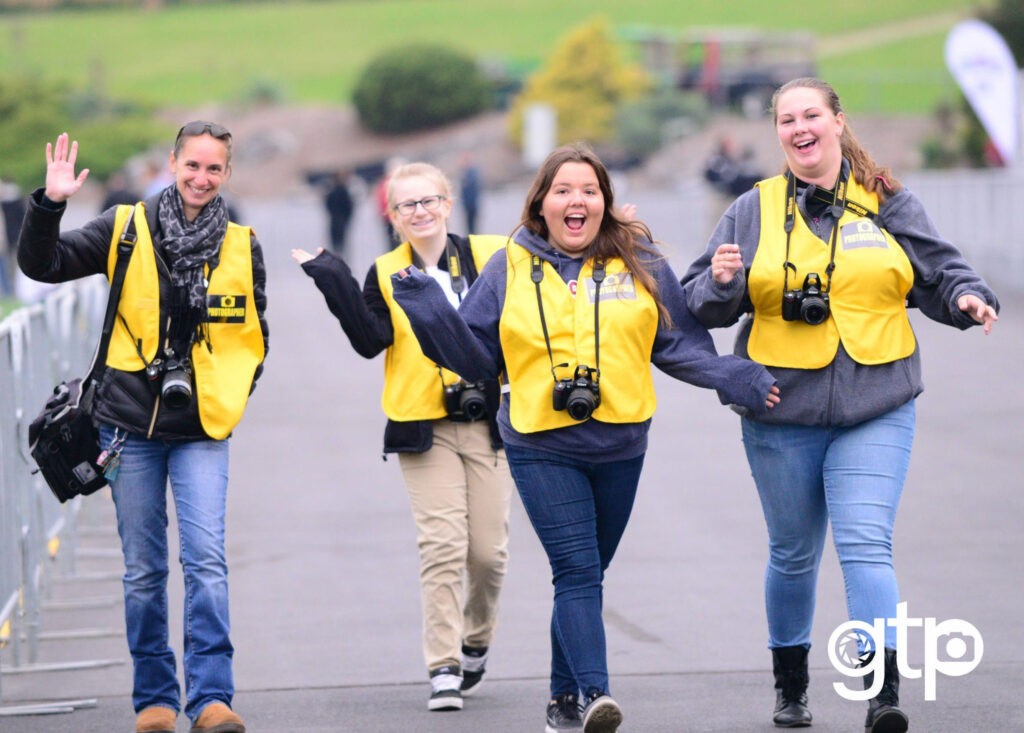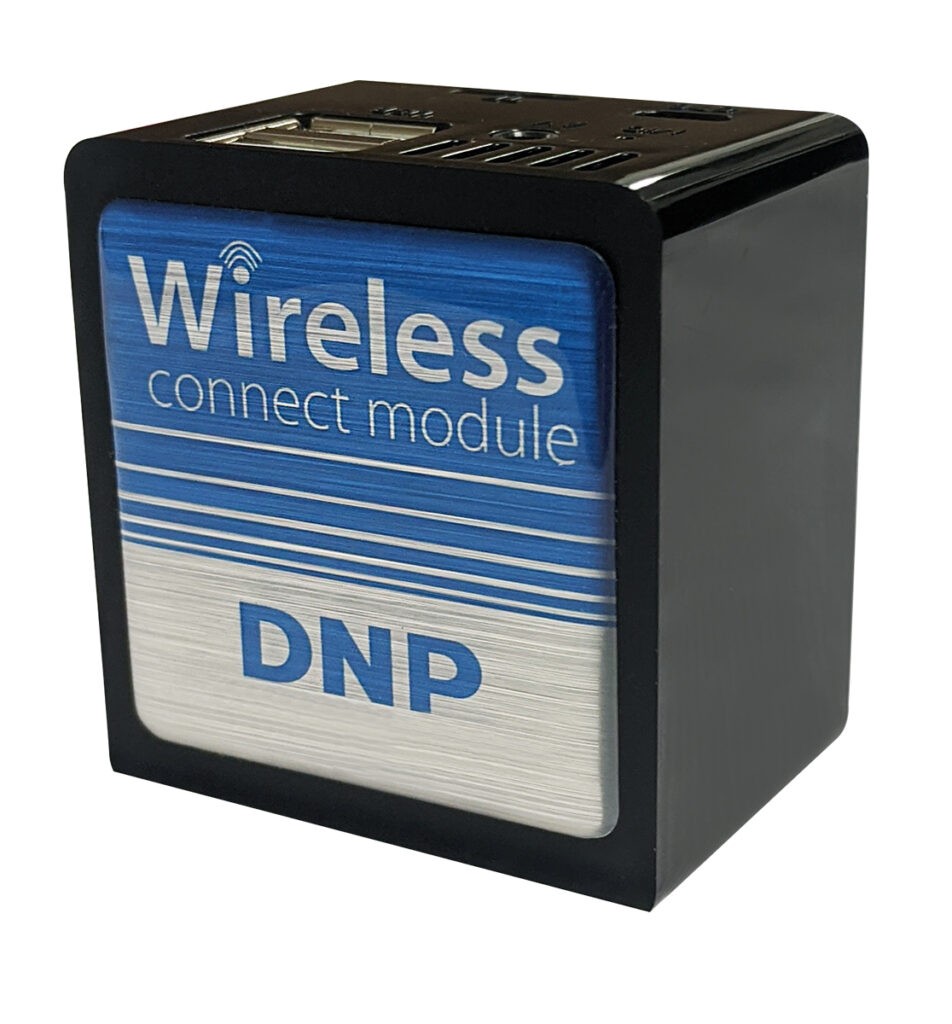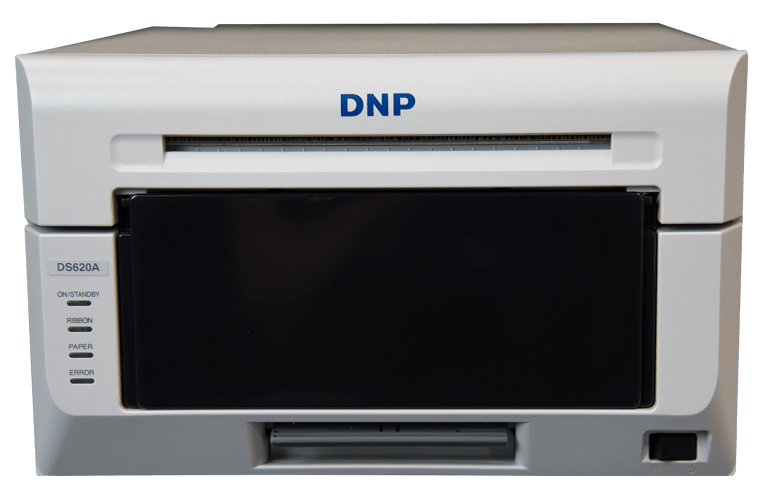By Joe Kleiman
ABOVE: DNP DS620A dye sublimation printer. Photos courtesy DNP Imagicomm America Corporation unless otherwise noted.
Park and attraction photography, whether roaming or staged at a photo spot, is a booming business that enhances the guest experience at visitor attractions of all kinds. But while having your photo taken at a visit to the zoo or park is a classic scenario, the technology has evolved to keep up with guest expectations. Key to customer satisfaction are the speed and quality of the photos that can be purchased onsite, preserving memories for years to come. It’s important that the process and the result are also a positive part of those memories – the process must be convenient and the experience pleasant, and the souvenirs of distinctive quality and lasting value.
Helping to meet these needs is DNP Imagingcomm America Corporation (DNP IAM), a leader in the field with its dye-sublimation printers and other photo solution technologies. Dye-sublimation is a technique for digital printing where heat transfers a dye onto a printing surface. Shinichi Yamashita, President of DNP Imagingcomm America Corporation, explains, “Guests want printed photos to remember their adventure without taking away from their time to enjoy the park. DNP IAM dye-sublimation printers allow park managers to offer fast photo prints. Dye-sublimation prints dry quickly, so guests can easily receive their photos and move on to the next attraction without having to worry about smudging or about the image fading throughout the day in the sun.”
InPark Magazine spoke with two leading park and attractions concessionaires in the US about how DNP products have improved their operations: GTP Corp. and Showtime Pictures. Both gave high marks to DNP for ease of installation and interface with their current technologies.
GTP Corporation – from Polaroid to dye-sublimation
When Get the Picture Corporation (GTP Corp.) started providing its photo services at Hersheypark in Hershey, Pennsylvania in 1987, expediency was a key factor. According to Michael Shearer, GTP Vice President, Systems & Engineering, “We started off with some pre-fabricated scenery – a surf scene, a shark scene, and Hershey’s signature streetlights, which are in the shape of Hershey’s Kisses chocolates. In those days, we shot everything on Polaroid film.”
Over time, GTP expanded its offerings at Hersheypark to include on-ride photos, for which it devised its own system, greenscreen photography, and custom photo wrappers for Hershey’s chocolate bars, which can be purchased globally at Hershey’s Chocolate World locations in Hershey, Las Vegas, Niagara Falls, and New York’s Times Square.
Above images courtesy GTP Corporation.
Throughout this time, handheld photography has remained the centerpiece of the company’s operation. In one of its first forays outside of Hershey, GTP began offering photo opportunities within the lorikeet enclosure at the Philadelphia Zoo. “The automated system on rides is our bread and butter,” says Shearer, “But with the handheld camera, we can really capture moments of pure joy on people’s faces, like when a lorikeet lands on them. We also capture pictures in a dinosaur attraction at Dutch Wonderland, in Lancaster, Pennsylvania. With children especially, it’s great to see that sense of wonder and joy being captured by a photo.”
When it came time to update its existing fleet of photo printers, GTP decided to make the change to DNP’s dye-sublimation printers, which they’d first learned about at the IAAPA Attractions Expo some years earlier. The changeover took place in March 2020 with the DNP printers scheduled to go online at two theme parks over the summer.
There was a pause when the parks and attractions at which GTP operates shut down due to the COVID-19 pandemic. But business returned. “When the parks started reopening,” said Shearer, “we noticed that customers were taking it slow on returning. But eventually that picked up as people started becoming more comfortable going places over time. We were worried about masks and how they would impact the photos, but we found that it really didn’t have that much of an impact. People are looking for safe, family friendly activities and photography is one way of capturing that for customers. We’re able to record both the moment and that sense of togetherness.”
According to Shearer, “Over the years, we’ve used a variety of printing technologies. The great thing about the dye-sublimation print is that it looks and feels like a real photographic print. Ink jet gets close, but it’s not quite there. For personalized products, like the chocolate bar wrappers, we still use ink jet, but for everything else, it’s dye-sublimation. Customers love the product.” In many ways, the dye-sublimation process harkens back to GTP’s first days offering instantaneous Polaroids.
Showtime Pictures: Cultural experiences
Entering its 30th year of business, Showtime Pictures of Orem, Utah, offers a unique kind of photo opportunity for attraction visitors. The company specializes in large venues that see high attendance – such as the Statue of Liberty and Empire State Building in New York City. “We operate in cultural attractions that offer huge content,” says Kemal Arin, Showtime’s President and CEO. “You can find us in places as varied as Space Center Houston and Graceland. We’re also in some of the country’s top aquariums – the Georgia Aquarium, Tennessee Aquarium, and Seattle Aquarium. We find that aquariums do very well for us because they offer a good combination of locals and out-of-town tourists.”
Central to the Showtime model is an entrance portal featuring an LED video wall or a stationary background, which can be removed and replaced with proprietary software. According to Arin, the company does not use greenscreens. For the entrance photo, a live photographer guides the visitors through the process. Showtime also offers a 20-camera option which creates a 180 degree image against a background suitable for both photo and video purchases. The company has used DNP dye-sublimation printers for the past decade.
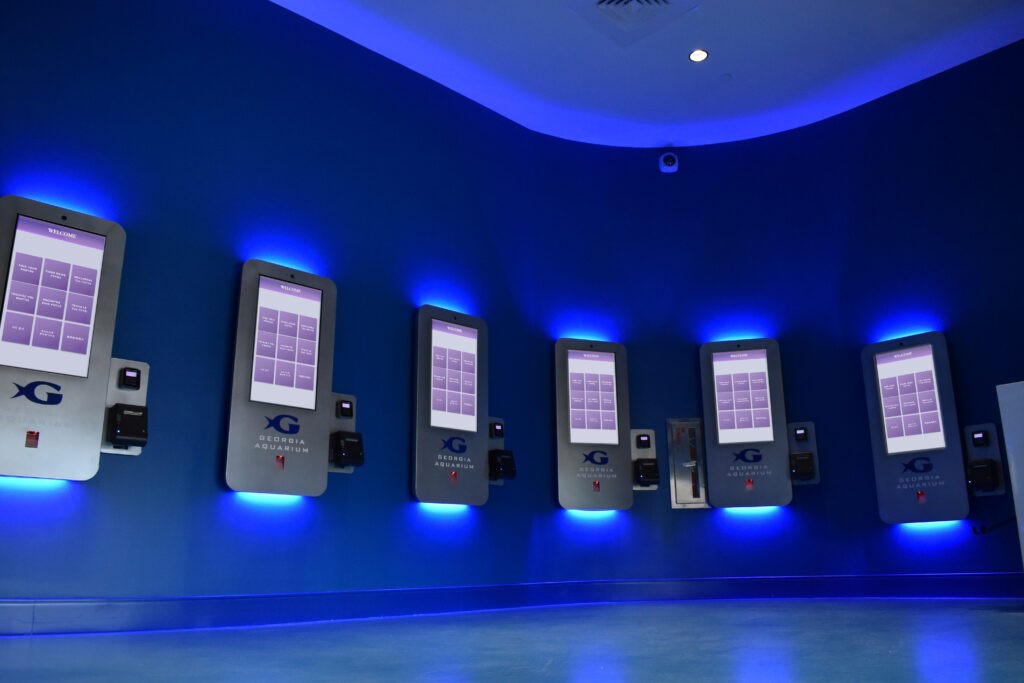
Photo kiosks at Georgia Aquarium. Courtesy Showtime Pictures.
Speed was a key factor in Showtime selecting DNP. “Dye-sublimation is faster and more efficient than other processes,” shares Arin, “The quality is excellent, but the speed of the process is most important to us. We’ve found that there is a very limited window to capture the interest of visitors in purchasing photos.” Showtime handles picture selection through an automated kiosk using Microsoft technology. The kiosk identifies visitors through a face scan and is then able to locate their photos for selection.
“DNP has a system that will enable that”
Among DNP’s newer products are the DS620A and Snap Lab SL620A. The DS620A is a compact professional digital photo printer that produces high quality prints that will not smudge. According to DNP, it can produce 4” x 6” images in less than nine seconds and 5” x 7” images in fifteen seconds. The SL620A adds a high-resolution touchscreen monitor that offers options for editing, creating photobooks, and printing from a smartphone.
1
1) DNP Snap Lab SL620A, 2) Wireless Connect Module, 3) DS620A dye sublimation printer
DNP’s newest product, introduced in June 2020, is the Wireless Connect Module (WCM). The WCM works with Apple’s AirPrint technology to allow iOS systems (iPhones and iPads) to print directly to attached DNP printers without having to install additional software or apps.
The souvenir photo industry is constantly evolving. Staying up to date absolutely requires awareness of how to differentiate from, complement and augment what guests do with their phones and personal devices. As Showtime’s Arin points out, “Our biggest competition is phones. We need to think of phones as a benefit instead of as competition. All of our printing has been specialized in the past. Now, we show them the photos digitally on their phones then print the pictures. DNP has a system that will enable that. Going forward, all products will have to be socially available or transferable.”


